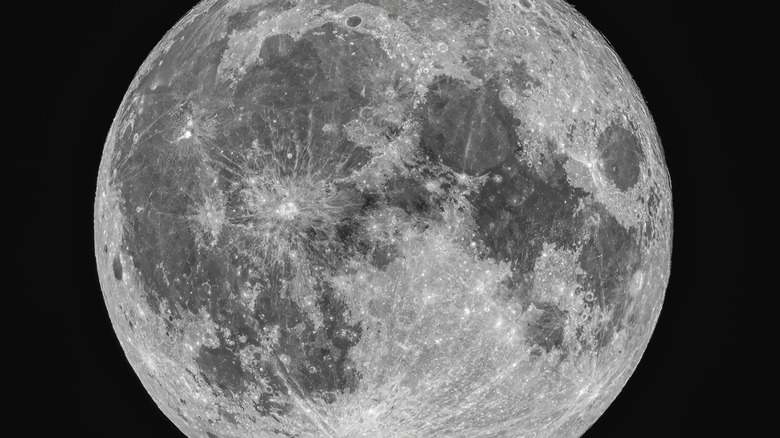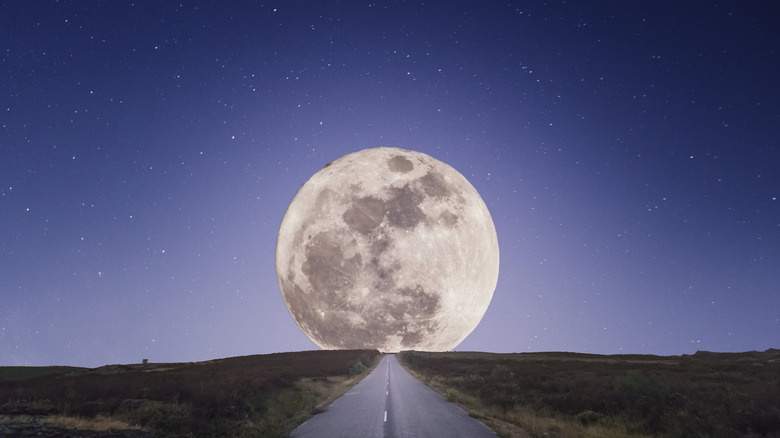NASA Wants To 'Send Your Name Around The Moon' In 2026 - Here's What That Means
The moon that has captured humanity's imagination for millenia. As an object so visible to the naked eye, yet so distant (approximately 239,000 miles from us), it's really no surprise. To date, just 12 people in our history have had the privilege of stepping on its surface, the first being Neil Armstrong, who had offered an historic soundbite to mark the occasion. Since Apollo 17 in 1972, nobody else has landed there. The space race had been won, and limited resources meant subsequent missions were ultimately cancelled. More than five decades later, though, these bold astronauts inspire millions with dreams of visiting the moon themselves. NASA's "Send Your Name with Artemis II" program, which is scheduled for next year, may be the next best thing for the vast majority of us who will probably never make the trip ourselves.
In September 2025, NASA declared that it was in the midst of a "Golden Age of innovation and exploration," and that a huge part of this effort is the upcoming Artemis II flight. It will be crewed by a quartet of astronauts: the Canadian Space Agency's Jeremy Hansen along with Christina Koch, Reid Wiseman, and Victor Glover of NASA. The intent is not to land on the moon this time around, but to perform a flyby. Interested parties can apply before January 2026 to have their names added to a special SD card that will be aboard the spacecraft. Let's take a look at the significance of this flight, the wider Artemis program, and how you can get involved and claim a little piece of history for yourself.
The Artemis program and the importance of Artemis II
In the half-century since the last person stepped on the moon, our space ambitions have become loftier. The moon, as distant as it is, is essentially Earth's next-door neighbor when compared to our next goal: Mars. For comparison, NASA estimates that it would be a three-year journey to Mars, as opposed to three days to the moon. The Artemis project, then, is about taking what we can learn about space travel to the moon and using it, before making the infinitely more daunting journey far deeper into space.
If we ultimately want to develop a presence on Mars, a planet that may have been more habitable than once thought, then doing the same on the moon is a potential first step in learning how. NASA has laid out a four-part plan for its Artemis program, which began with the Space Launch System's firing of the Orion craft. It passed beyond the moon and returned safely between November and December 2022. There was no crew for this voyage, but by monitoring the crew compartment and the readings from a spacesuit that had been placed on a mannequin that flew the mission, NASA was able to learn a lot about the conditions. The next step, Artemis II, is a mission with astronauts aboard.
The quartet of astronauts from NASA and the Canadian Space Agency is scheduled to take the Artemis II mission in April 2026. Lori Glaze, NASA's acting associate administrator with the Exploration Systems Development Mission Directorate, explained that this flight "is also an opportunity to inspire people across the globe and to give them an opportunity to follow along as we lead the way in human exploration deeper into space."
How to send your name around the moon with Artemis II
The Artemis project is an incredible undertaking. Artemis IV, the last stage, is intended to culminate in the development of a lunar space station. It's an enormous step towards Mars, and, potentially, beyond. It's an exciting prospect. That's why NASA has extended the opportunity to be a part of it, with the Artemis II 'boarding pass' system. These passes, of which 490,450 have been claimed as of the time of writing, are downloadable mementos. They prove that your name will be on the SD card aboard Orion as its astronauts transform our understanding of space and go a long way toward shaping humanity's future. To claim your own pass (available until January 21, 2026), the process is simple:
- Visit NASA's Artemis II Sign Up page (a Spanish language version of the Sign Up page is also available).
- Input your first and last names, plus a Pin Code of your choice. Be sure to keep your PIN safe, as NASA warns there isn't a recovery option for it.
- To see your boarding pass after doing so, visit the Look Up Boarding Pass page (or its Spanish equivalent) and input your details from step two, then click Search.
The Look Up Boarding Pass page also provides a link to a Boarding Pass that isn't filled in, if you'd just like to check out the details. It lists Christina Koch and Jeremy Hansen as mission specialists, Victor Glover as the pilot, and Reid Wiseman as the mission's commander. They'll cover 685,000 miles, a testament to NASA's continued dedication to innovative new technologies.


